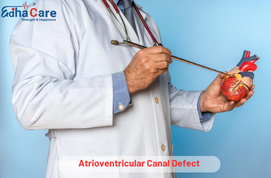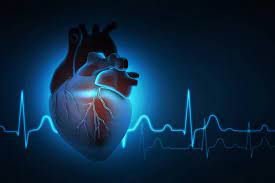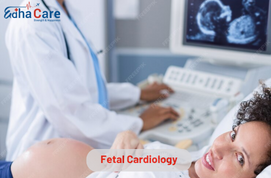Atrioventricular Canal Defect

A congenital heart abnormality called an atrioventricular canal defect (AV canal defect) or atrioventricular septal defect (AVSD) is defined by an abnormal opening in the heart's core between the upper chambers (atria) and lower chambers (ventricles). The inadequate development of the septa, which divide the atria and ventricles, is the outcome of this anomaly, which causes irregular blood flow between the chambers. The severity of AV canal problems varies, and they may involve anomalies in the heart's valves that control blood flow. Large holes in the heart's core, irregular valve function that may result in blood regurgitation, and aberrant connections between the chambers of the heart are common characteristics of AV canal anomalies. Common features of AV canal defects include a large hole in the center of the heart, abnormal connections between the heart chambers, and abnormalities in the valves that may cause regurgitation (leakage) of blood. AV canal defects often require surgical intervention to repair the defects and restore normal heart function.
Book an AppointmentAbout Atrioventricular Canal Defect
Atrioventricular Canal Defect Symptoms : Symptoms of an atrioventricular canal defect (AV canal defect) might differ based on how severe the defect is. Symptoms of AV canal problems in infants include difficulty breathing, fastening the lungs to breathe poor nutrition, failure to thrive, and cyanosis, or blue coloring of the skin. They might also get pneumonia or persistent respiratory infections. Infants with AV canal abnormalities may occasionally experience congestive heart failure, which manifests as tiredness, fast weight gain, and swelling in the legs and belly. Older individuals with less severe AV canal abnormalities may have milder symptoms or symptoms including exhaustion, exercise intolerance, and shortness of breath.
Atrioventricular Canal Defect causes : Atrioventricular canal defects, or AV canal defects, have a variety of underlying reasons that are not well understood. But a number of things influence how it develops. Genetic predisposition is important; Down syndrome (Trisomy 21) and other genetic disorders are highly correlated with an elevated incidence of AV canal defect. Environmental variables during pregnancy can also increase the risk; they include maternal illnesses (e.g., rubella), drug or medication exposure, alcohol intake, and maternal diabetes. Moreover, the disorder is exacerbated by anomalies in the development of the fetal heart, such as problems with valve or septum construction. All things considered, the complicated interplay between genetic vulnerability and environmental influences during fetal development is most likely the cause of AV canal malfunction. To completely understand the underlying mechanisms guiding the growth of this congenital cardiac condition, more research is required.
Atrioventricular Canal Defect remedies : In order to correct the atrioventricular canal defect (AV canal defect) and return the heart to normal function, surgery is usually required as part of treatment. The degree of the problem and the patient's general condition will determine the specific treatment plan. In order to minimize risks and maximize results, surgical correction of AV canal abnormalities is usually carried out in the early stages of infancy or youth. Rebuilding the defective heart valves and sealing the hole in the septum—the wall separating the heart's upper chambers—are the two steps in the surgery. To treat complicated flaws or lingering problems, it may occasionally be necessary to perform repeated procedures. Following surgery, patients with AV canal defects need to be followed up on by a cardiologist for the rest of their lives to monitor heart health and address any possible consequences.
Procedure of Atrioventricular Canal Defect
The following procedures could be performed during an open-heart operation to fix an atrioventricular canal defect (AV canal defect):
Anesthesia: To guarantee that the patient remains conscious and pain-free during the surgery, a general anesthesia is administered.
Incision: To reach the heart, an incision for surgery is created in the middle of the chest. Depending on the specifics of the abnormality and the patient's anatomy, the incision's dimensions and position may change.
Cardiopulmonary Bypass: During the operation, the patient is hooked up to a device called a heart-lung bypass that acts as a short-term replacement for their heart and lungs. This reroutes blood flow through the bypass machine, enabling the surgeon to perform surgeries on the heart while it is motionless.
Repair of the Defect: Utilizing patches or tissue grafts, the doctor repairs the hole in the septum, the wall dividing the upper chambers of the heart, to fix the atrioventricular canal defect. In this phase, the malfunctioning valves in the heart could also be fixed or replaced.
Closure: The chest incision is closed with stitches or staples once the issue has been fixed, and the area of injury is covered in sterile cloths.
Postoperative Care: A patient is moved to the ICU, or intensive care unit, for observation and recovery after operation. They may be required to be on a mechanical ventilator, take heart-supporting medicine, and get relief from pain.
Rehabilitation: After the patient's health stabilizes, they go through a period of recovery and rehabilitation. To help them recover strength and function, this stage may involve cardiac rehabilitation, Occupational Therapy, and physical treatment.
All things considered, correcting an atrioventricular canal defect is an intricate procedure that calls for exacting surgical techniques, specialized tools, and interdisciplinary care. Healing the defect, enhancing the cardiac system, and averting issues linked to AV canal defects are the primary goals of surgery.
Require Assistance?
Get A Quick Callback From Our Healthcare Experts






